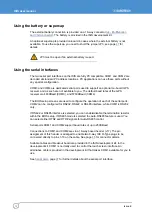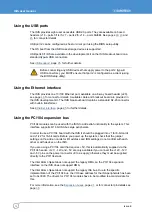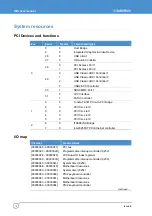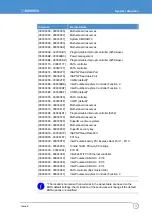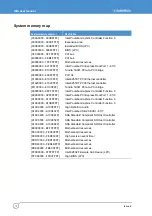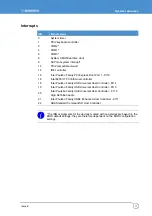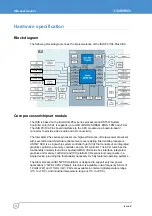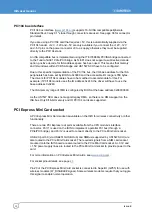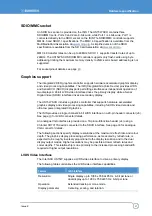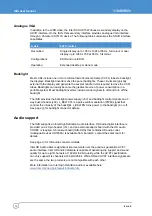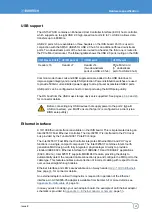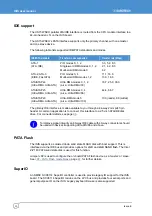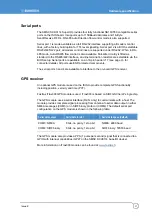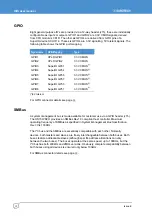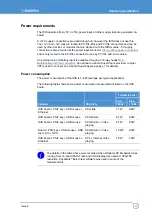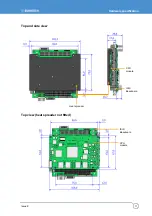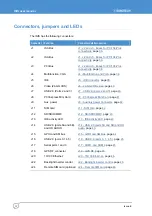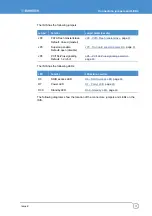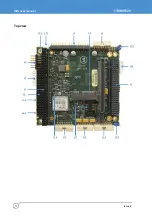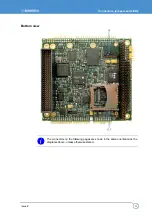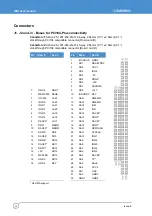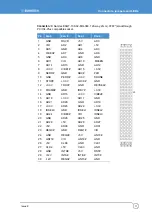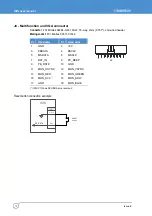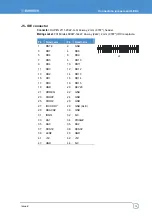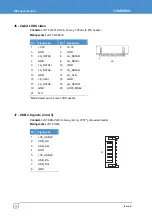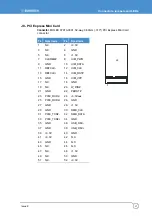
ISIS user manual
Issue E
26
IDE support
The US15W SCH parallel ATA/IDE interface is routed from the CPU module interface to a
44-pin header (J5) on the ISIS board.
The US15W SCH’s PATA interface supports only the primary channel, with one master
and one slave device.
The following table lists supported IDE/PATA standards and modes.
IDE/PATA standard
Transfer modes supported
Transfer rate (Mbps)
ATA-1
(ATA, IDE)
PIO modes 0, 1, 2
Single-word DMA modes 0, 1, 2
Multi-word DMA mode 0
3.3, 5.2, 8.3
2.1, 4.2, 8.3
4.2
ATA-2, ATA-3
(EIDE, Fast ATA)
PIO modes 3, 4
Multi-word DMA modes 1, 2
11.1, 16.6
13.3, 16.6
ATA/ATAPI-4
(Ultra DMA, Ultra ATA)
Ultra DMA modes 0, 1, 2
(a.k.a. Ultra DMA/33)
16.7, 25.0, 33.3
ATA/ATAPI-5
(Ultra-DMA, Ultra ATA)
Ultra DMA modes 3, 4
(a.k.a. Ultra DMA/66)
44.4, 66.7
ATA/ATAPI-6
(Ultra-DMA, Ultra ATA)
Ultra-DMA mode 5
(a.k.a. Ultra DMA/100)
100 (reads), 89 (writes)
The primary IDE interface is made available to you through a 44-way 2mm pitch pin
header. A common application is to connect this interface to a 2.5-inch ATA/IDE disk
drive. For connector details, see page
To improve signal integrity an 80-way IDE cable with 40-way connectors should
be used with devices supporting Ultra ATA/66 and above.
PATA Flash
The ISIS supports a soldered down solid state FLASH disk with boot support. This is
interfaced via the IDE bus and provides options for 2GB and 4GB NAND flash. The Intel
Z-P140 PATA solid state disk is used for this function.
Jumper JP2 is used to configure the on-board PATA Flash device as a ‘master’ or ‘slave’.
See
, for further details.
SuperIO
An SMSC SCH3114 SuperIO controller is used to provide legacy IO support for the ISIS
board. The SCH3114 SuperIO resides on the LPC bus and provides four serial ports and
general purpose IO on the ISIS. Legacy keyboard/mouse is also supported.

